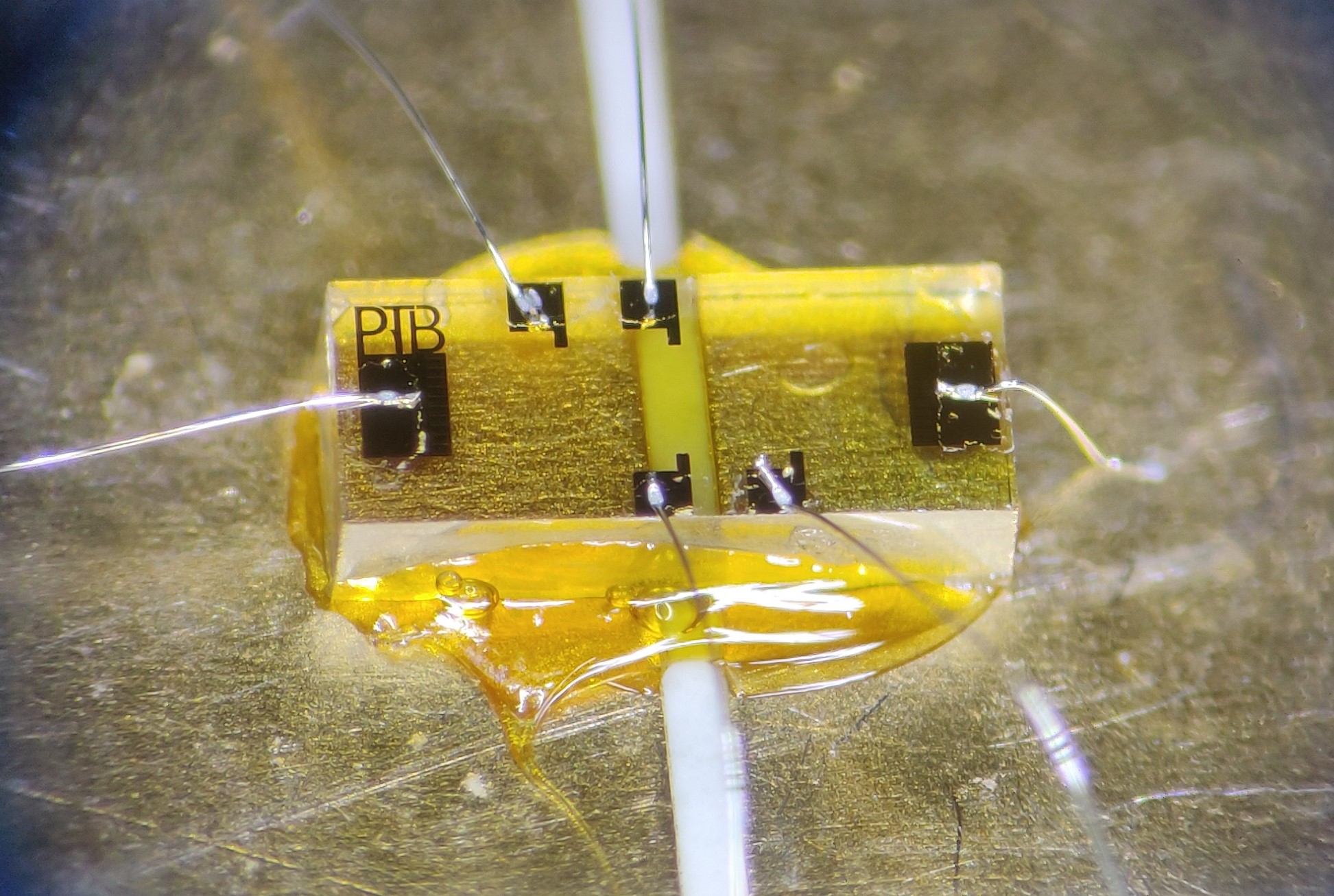
Preparing for the transition from a GaAs to a graphene-based quantum Hall resistance reference at the BIPM
Since the last revision of the SI, quantum Hall resistance standards (QHR) have been used to perform a direct realization of the ohm from the Planck constant and the elementary charge. These QHR standards are used in a growing number of NMIs even though the cost and complexity of their implementation remains high, mainly due to the technology relying on GaAs/AlGaAs heterostructures that require a very low temperature (<1.5 K), a high magnetic field from superconducting magnets (usually >10 T) and expensive liquid helium to operate.
However, the development and continuing improvement of graphene-based QHR standards during the last decade is now offering an alternative to GaAs based standards. Graphene QHR standards have the remarkable ability to be quantized for less stringent experimental conditions both regarding temperature and magnetic flux density. Quantization of graphene QHE samples has been demonstrated for flux density of 5 T or below and temperature up to 4.2 K.
Replacing GaAs QHR standards by graphene-based standards would bring a significant simplification in the implementation of these primary resistance standards as well as a reduction of their utilization costs and size. This is particularly interesting for the BIPM within the framework of its onsite QHR comparison programme BIPM.EM-K12.
The BIPM has recently had the opportunity to study a new graphene-based QHR sample developed by PTB within the framework of the Graphene Impedance Quantum Standard (GIQS) EURAMET project [1,2]. This sample was fabricated from a homogeneous monolayer of epitaxial graphene of millimetric size whose fabrication has been optimized and on which a molecular post-growth doping technique has been applied to reduce the electron density to values below 1011 cm−2. It is encapsulated within polymer layers and stable working points are expected for low magnetic flux density values below 6 T.
The precision measurements carried out at the BIPM consisted mainly of a verification of the equivalence between this newly developed PTB graphene sample and existing BIPM GaAs references, the graphene sample being operated at liquid helium temperature, 4.2 K, and low magnetic flux densities below 5 T. The graphene QHR was compared, in dc, to a GaAs QHR reference standard through the measurement of a 100 Ω classical transfer resistance. This comparison has been repeated for different current values and with two different GaAs samples of two different fabrication sources.
The differences measured between graphene and GaAs-based QHR samples were found to be very small of the order of (1 ± 3) nΩ/Ω for magnetic flux densities of the graphene sample as low as 4 T, demonstrating the high accuracy the new PTB graphene sample. The stability over time of its carrier density remains to be evaluated. However, regarding the latter point, it has been demonstrated by the PTB and GIQS project partners that the carrier density of the same type of graphene sample can remain stable for a long time and after travelling internationally over long distances between several metrology institutes, provided it is kept enclosed in a container filled with inert gas.
Another type of commercially available graphene-based sample using fabrication processes developed at NIST was also tested at the BIPM, prior to the PTB sample. This sample whose carrier density can be tuned by annealing to the desired value before use [3,4] gave good results and is another very promising candidate for the development of the next generation of QHR standard at the BIPM.
Based on these encouraging results, the transition from the actual GaAs-based QHR reference to a compact graphene-based reference, allowing relaxed operational conditions, is now underway at the BIPM and is planned to be effective in a few years’ time. In the meantime, the study of other graphene-based samples from other sources and/or improved versions of the existing samples will continue, in particular regarding the stability of their carrier density over time or their ability to be easily tuned before use.
- GIQS project website: https://www.ptb.de/empir2019/giqs/home
- https://www.ptb.de/empir2019/fileadmin/documents/empir-2019/GIQS/documents/GIQS_Newsletter_N3.pdf
- T. Oe et al., Comparison Between NIST Graphene and AIST GaAs Quantized Hall Devices, IEEE T. Instrum. Meas., 69(6), 2020, 3103-3108 doi: 10.1109/TIM.2019.2930436
- A. F. Rigosi et al., Metrological Suitability of Functionalized Epitaxial Graphene 2020 Conference on Precision Electromagnetic Measurements (CPEM), 2020, 1-2, doi: 10.1109/CPEM49742.2020.9191783